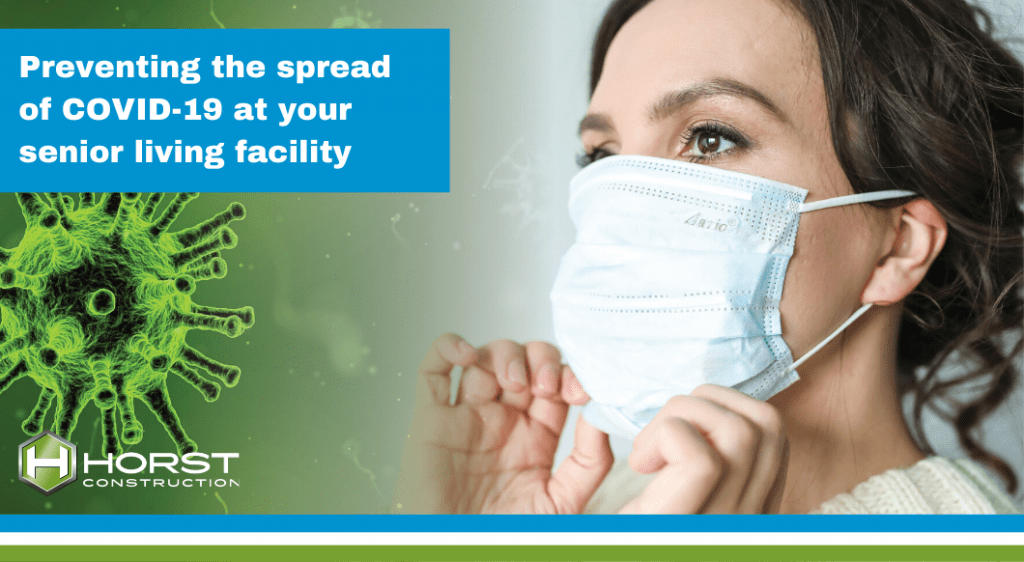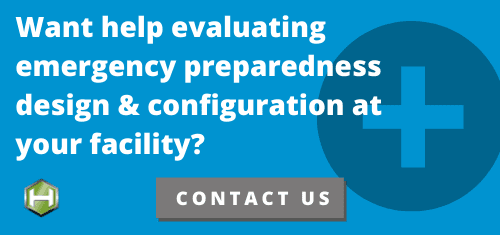Preventing the Spread of COVID-19 at Your Senior Living Facility

5 Things to know about preventing the spread of Coronavirus COVID-19 at your Senior Living Facility
And 5 considerations for future planning for emergency preparedness
It’s official. The World Health Organization (WHO) has declared the Coronavirus or COVID-19 outbreak as a Public Health Emergency of International Concern. While we have been fortunate to have minimal cases identified in Pennsylvania and neighboring states, a trip to any grocery store will tell you that many in our area are in panic mode. We know that our valued clients and partners in the senior living sector are especially concerned, as the population they serve is obviously labeled as high risk.
As such, we have compiled our findings from the most up-to-date research to provide a list of five things to know about preventing the spread of COVID-19 at your Senior Living Facility. We have also included a list of five considerations for future planning for emergency preparedness.
FIVE THINGS TO KNOW ABOUT COVID-19 NOW:
1. Calm and informative reassurance is key.
Your residents, staff, and families are likely scared. The media coverage for this outbreak has been continual for several weeks now, and misinformation is unfortunately common. By relaying information about the facts and your facility’s preparedness in a calm and reassuring manner, you will communicate a sense of rational readiness to deal with the situation. Ensure that information is available to your residents, employees, volunteers, and family members in a variety of formats – from in-person conversations and concise signage to e-mail or web announcements related to the matter. Your community will be looking to you for leadership and demonstration of preparedness. The Center for Disease Control (CDC) has a downloadable communications package available here.
2. Enforce thoughtful limits on visitors and unnecessary events.
While some communities have put strict no-visitor and no non-essential event policies in place as a preventative measure, this might not always be what’s best for your facility. The CDC has instead recommended a thoughtful approach that analyzes visitor risk upon entry to your community. This might include a more stringent visitor check-in policy that evaluates for any symptoms prior to granting access, specified visiting hours that coincide with staff availability for monitoring and assessing risk, and hand washing/sanitizing stations at entry points. These guidelines could be helpful in striking a balance between minimal risk and the importance of family and friend visitation to residents.
Likewise, “unnecessary events” that are social in nature and involve the congregation of many people in a limited space should have some precautionary procedures in place. All attendees to events such as these should be evaluated for any symptoms of illness, encouraged to wash or sanitize their hands upon entry and exit to the event space, and urged to avoid physical contact. As with everything, clear and calm communication about why these policies have been enacted will be a key to keeping your community composed.
3. Prepare your staff appropriately.
One of the major challenges to senior living communities in light of these events is maintaining adequate staffing during a time of not only illness or fear of illness, but also potential school closings, stricter restrictions on childcare policies, and cautious reaction to any possible symptoms that pop up. Encouraging your employees to stay home when they are sick is a practice you likely already have in place, but clearly communicating and reinforcing that policy is a good idea.
Provide resources to your staff related to prevention measures, your plan and preparedness for the situation, and availability of personal protective equipment or PPE. Enforce policies related to proper hand washing techniques, sanitization, and etiquette related to coughing, sneezing, and tissue use. Another suggested practice is the have a dedicated group of employees who will care for residents with potential symptoms. The CDC has an online course for recommended infection prevention practices as well as a resources checklist here.
4. Monitor and react.
Make sure your staff knows the signs to be on the look out for and provide continual monitoring of your residents for any symptoms. Provide resources to your employees who will be in contact with your residents that outline the policy or procedure they should follow if a resident is beginning to show symptoms including clearly identifying who they need to inform. Encourage your staff to ask questions if they are uncertain about a resident’s symptoms or how to react if they suspect illness. Always react in a calm and reassuring manner, without blowing signs out of proportion.
5. Help your residents use unfamiliar technology.
A great tool available to some residents who are looking to stay in touch with loved ones without face-to-face contact is the use of video communications. While family members may be familiar with these programs, many residents may not be. This is an opportunity to encourage giving something like skype a try, and staff may be able to help them feel more comfortable utilizing this technology through guidance and answering questions about an unfamiliar and sometimes anxiety-inducing new tool. Who knows – maybe this will open a new opportunity to some of your residents for more regular communication with loved ones who are not always able to visit in person!
CONSIDERATIONS FOR PLANNING A SENIOR LIVING FACILITY WITH EMERGENCY PREPAREDNESS IN MIND:
1. Safety-focused entry points.
Policies for visitor or volunteer check-ins vary from facility to facility, but many organizations find that in times of uncertainty or precautionary measures one of the areas they focus on is visitor entry points. Even if your community does not have a stringent policy related to visitor identification or signing in, considering the safety of your entry points and the ability to put monitoring in place in the event of emergency can be a helpful measure. Additionally, the placement of hand sanitization equipment near all entry points will help keep germs at bay – an important process for senior living providers no matter what the current headlines.
2. Designated areas for necessary quarantines.
Health emergencies that have a contagious component often require a quarantine of the infected patient. While we hope for this not to be a necessity too frequently, it is a good idea to have an appointed area that is designed for this purpose. Considering things such as staff protective equipment needs, location of the space and avoidance of resident common areas, availability for food service, and necessary restroom facilities are all useful discussion points when planning.
3. Access to supplies.
Having earmarked central locations for supply access can help your staff respond efficiently in emergency situations. A thoughtful layout of your supply areas might analyze hubs for activity, multi-purpose common areas, and resident room arrangement to find the most helpful places to have quick access to supplies. An effort to keep these areas thoughtfully placed and stocked with ample supplies will pay off when your employees have to assess and react to an emergency scenario quickly.
4. Update the backup plan often.
It is easy to create a backup plan when you first design and open a senior living facility and feel like you can check it off your list. However, those communities who are most prepared for disasters know the importance of re-evaluating and updating backup plans often. This means steps like ensuring your generator(s) are right for your needs, emergency lighting is in working order, and backup water tanks are ready in the event of water shut off. It is more than just these big items though. Don’t forget to ensure you have up-to-date emergency contact information for your residents and employees, medical information available and accessible, and things like key resources and phone numbers at the ready to grab and react immediately if necessary.
5. Install appropriate air-handling systems.
Reducing exposure through a proper and well-maintained air-handling system is a great way to limit the spread of air-borne pathogens and illness. Contract with a professional who can help you select a system that meets your specific needs, evaluates the appropriate directionality of the system, monitors and addresses filtration levels, and routinely provides evaluation and maintenance.
Posted March 11, 2020

